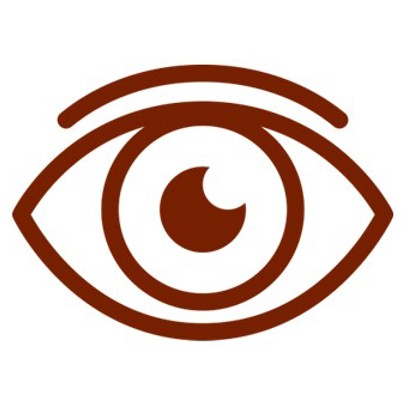Preferential Option for the Poor
Lower Primary
What is poverty? Does everyone have what they need?

Ronita (22) smiles as she holds her sons, Egzy Grey (3) and Clark (5), in their small home in Quezon City, Philippines. Photo: Richard Wainwright/Caritas Australia
Inquiry Question: What is poverty? Does everyone have what they need?
By the end of this unit, students will understand that some people are living in poverty and that this means they don’t have everything they need to live a full life. They will understand that organisations like Caritas Australia help people who are living in poverty to have the skills and resources they need to build a better life for themselves, their families and communities.
Before you start:
- For your own background knowledge, watch the Catholic Social Teaching (CST) film, ‘Preferential Option for the Poor’.
- Download the various resources referenced at the bottom of this page (worksheets, slides etc.) Have the presentation and weblinks ready to go on your computer/interactive whiteboard.
- Read or watch the books and stories featured in the learning sequence first to establish if they are suitable for your students.
- Locate any Scriptures and copies of Church texts (all hyperlinked within the learning sequence below).
- Read Scripture commentaries (hyperlinked within the learning sequence below)
- Gather required materials:
- Bag filled with a range of items that show both needs and want
- 2 Hoops to create a large-scale Venn Diagram or some string
- Water in a large container with objects that can float (leaf, flower, boat) and a rock.
A note on talking about “the poor”: At Caritas Australia, we aim to communicate in an inspiring and respectful tone. Even though we are talking about people in difficult situations, it is important to emphasise human dignity and people’s strengths, their resilience and perseverance. It is more challenging to communicate such nuances to a younger audience, so at this level, we suggest starting to use language such as ‘’people living in poverty’ or ‘people experiencing poverty’ rather than ‘the poor’ or ‘poor people’ where possible, so as not to reduce people to the conditions they may be experiencing at the time.
See-Judge-Act-Pray Process
This learning sequence has been created using the ‘See, Judge and Act’ model.
This reflection–action process was first used by a Belgian Catholic priest, Joseph Cardijn (who later became a Cardinal) with Young Christian workers prior to the first World War. T
his approach was also recommended in the 1961 encyclical letter written by Pope John XXIII called Mater et Magistra (Mother and Teacher).
What is ‘Preferential Option for the Poor’?
- the act of prioritising the needs of the poor over the desires of the rich, the rights of workers over profits and the preservation of the environment over its exploitation
- a way of responding in love to the unjust circumstances in which millions of people live.
Student-friendly explanation:
- The Bible teaches us to take extra special care of the most vulnerable people in society.
- We should try to create a fairer world.
Learning intention
We are learning:
- understand that not everyone has everything they need (basic rights – education, clean water, sanitation, house and food)
- know what it means to be living in poverty
- explore how Caritas Australia can help people and/or communities
- love everyone, like Jesus
- tell others what is happening so that everyone has a better chance of getting what they need.

SEE
Activity: What did you hear?
Students spread out around the classroom.
Teacher tells one student a simple statement they are going to remember framed as a ‘Did you know?’ For example, “Did you know … I love cats? ...God loves you? ... I love to play games?”
The student tells someone else and then sits down in their original position. The first time, students are only allowed to be told the statement once. They cannot clarify the details or ask to have it repeated.
Once all students know, ask different students what they heard. Did they all get the same message? Discuss, why or why not.
Then change the rules so that they must be certain what they heard. The correct message needs to get out.
For the last round, the message is: Did you know that not everyone has what they need?
Debrief: At first the message may not be heard correctly and that’s ok, it highlights the need to listen carefully to what others are saying. By the time the teacher gets to the last round, all students should have the same message. Reiterate that we need to get the story right and that we need to listen carefully when someone tells us something important.
Discuss: What does the statement, Not everyone has what they need, mean?
Allow students to brainstorm and offer a whole range of suggestions. Other questions to help stimulate thinking might be – Who is everyone? What is a need?
T-Chart: Ask students what they already know and what they need to know about people who are living in poverty. Make a list of these things under the two headings on a T-chart (Know and Need to Know). It doesn’t matter if what the students say is incorrect, write these things anyway. This will allow the teacher to see any misconceptions that need to be corrected throughout subsequent lessons and that all ideas are valid. Display them in the classroom, ideally on post-it notes so that you can come back to it and move ideas from the Need-to-Know column to the Know column as the learning takes place.
What do you need to live?
Needs vs wants Venn Diagram
· Prepare a large Venn diagram on the floor using string or hula hoops. Place a heading for each circle: ‘Must have to live’ and ‘Nice to have’.
· Fill a bag that students cannot see inside with a number of different items, both real and pretend versions, of some essential things we need to live and some that make life a bit easier or nicer. Examples include a cereal box, bottle of water, bag of lollies, schoolbook, video games, money, house, jewellery, jacket.
· Students take an item out of the bag and place it in the circle they think it belongs to. If they think they might belong in both, put them between the circles.
Note: For Foundation, this might be done as a whole class. For Years 1 and 2 it could be done in groups or individually. Give each student group (or student) some items and put them into the circle that they think they belong in. Alternatively, students could draw or write ideas.
· Ask students what if they didn’t have each of the items. Allow students time to think about each item. What are the consequences? Ask students for other names they could give each group, such as ‘Needs’ and ‘Wants’.
· Briefly allow students time to share some of the things they need or want.
What is poverty?
Explain that some people don’t have what they need. This can mean they are experiencing poverty.
Show slides 2 to 7 of the What is Poverty? PowerPoint
Allow students to share other example of what poverty could be.
Leaia’s Story
Show students the See, Think, Wonder photos of Leaia provided in the Preferential Options for the Poor Presentation. What do students See, Think, Wonder ?
Read Leaia’s Storybook. Discuss the questions on the final page as a class.
Students create a Venn Diagram recording how their life is similar to and different from Leaia’s and her family.
Discuss that although initially Leaia’s family didn’t have what they needed, access to clean water, with the help of others, they got what they needed.
Discuss that they are not the only people in the world like this. The students might have examples to share of where they have seen or know of people who don’t have everything they need.
Repeat the above activity with other Caritas Australia stories such as: Priscilla (Zimbabwe), Memory (Malawi) or Thu (Vietnam).

JUDGE
Circles All Around
Read Circles all Around Us by Brad Montague
Discuss the story and then ask some of the following questions:
- Who loves us? Family, friends, God
- How do we show others we love them? We do things for them, we give them things
- How do others show us that they care for us? Break this down into family, friends, teachers.
- What is this book about? Sharing love.
- How can we share love?
Activity – have students draw a circle to represent themselves in the centre of the page (a circular page would be ideal) and then draw concentric circles and draw or write people they are connected to. The closer the circle to themselves the closer the connection. Display them in a circular fashion in the classroom with the class name at the centre. Have them connected in some way (overlapping or with string) to show that they are in each other’s circles.
Scripture: The Good Samaritan
Note: Teachers explore the Worlds of the Text here.
Read the Good Samaritan (Luke 10:25-37) to the students.
Discuss the story and ask some of the following questions after giving students some of the world behind the text. For example, who the Samaritans were and that the people Jesus was telling this story to, didn’t like the Samaritans.
- Who told this story?
- Who showed love in this story? How?
- What did the injured man need?
- How does knowing more about the Samaritans make it even more amazing?
- What do you think Jesus was telling the people?
Drawing Conclusions
- Explain that around the world, all the things that God has given us to live are not always shared fairly. Refer back to the needs and wants lesson. Remind students that just like in the story of the Good Samaritan not everyone helps.
- Emphasise how Jesus instructs us to love everyone, with particular emphasis on people who do not have what they need to live a full life.
- Highlight that while it might sadden us to think that some people do not have what they need, the good news is that we are all able to do something about it!
Refer to the Know and Need to Know T-chart from earlier in lesson and see what can be moved from one column to the other.

Act
The Ripple Effect
Have some water in a large container, with some toy boats or a leaf or flower or a number of things on the water surface. Drop a rock or a stone into it. What happens when you do that? Have students Turn and Talk to their neighbour. What happens when you add a boat or lots of boats? Students Turn and talk to their neighbour again.
Discuss how one action can affect all the things on the water’s surface. This can then be applied to life. What we do each day affects those people around us, those people in our circles like in the book. This can work positively and negatively.
How can we help?
Discuss: how can we help those who don’t have all that they need both in their inner circles and their outer circles? Examples might be: tell their story to raise awareness so others can help too, donate money, donate food, ask people what they need.
Display the following quote, available in the Preferential Options for the Poor Presentation.
‘It is an act of charity to assist someone suffering, but it is also an act of charity, even if we do not know that person, to work to change the social conditions that caused his or her suffering.’
Pope Francis, Fratelli Tutti n186
Explain that even though we don’t personally know the people Caritas Australia helps, when we support agencies like Caritas Australia we are working for change and loving our neighbour.
Show slides 8-14 of the What is Poverty? PowerPoint.
Revisit Leaia’s Photo Storybook and questions 4 & 5 at the end.
4. How did Caritas Australia help?
5. How will you share Leaia’s story with others?
Pose the following question: What if you tell two people about Leaia’s story and then they told two people, how many people would know? Students can draw a picture to help them work out the answer. How can sharing the work of Caritas Australia help people who don’t have what they need?
As a class, brainstorm different ways we can share the message that some people need extra help and share how we can help them through organisations like Caritas Australia and Vinnies. Answers could include newsletters, letters, presentation at school assembly etc.
Refer to the Know and Need to Know T-chart from earlier in lesson and see what can be moved from one column to the other.

Pray
Note the following prayer is also available in the Preferential Options for the Poor Presentation.
Dear God,
We, here in (insert class name), thank you for helping us to understand that some people don’t have what they need, like healthy food to eat, clean water to drink or a home to live in. Encourage us to share our learning with others. We pray for people living in poverty. We ask that you guide us to do what we can to help others in need.
Amen
Conclude with a song. Here are some suggestions for you:
- These Hands - Andrew Chinn
- Go Make A Difference – Steve Angrisano
Extension: Use the Poverty Prayer Service. Encourage students to take on different roles, and perhaps invite another class or parents to join you.












